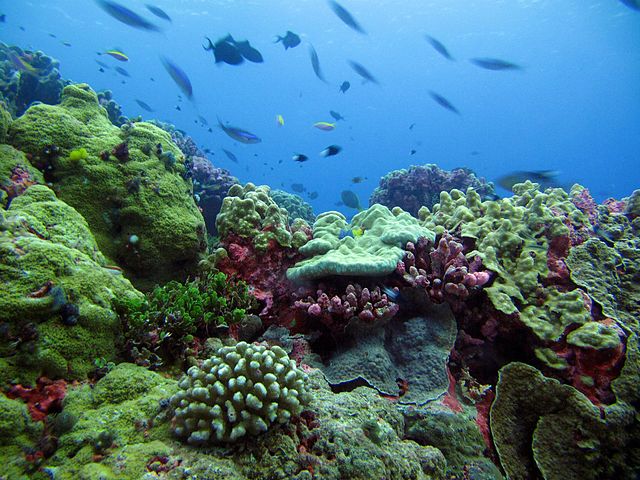 Exciting news, folks! Researchers have reported that new seaweed has been discovered near Antarctica. Could this discovery solve the problems of climate change, food, and land shortage?
Exciting news, folks! Researchers have reported that new seaweed has been discovered near Antarctica. Could this discovery solve the problems of climate change, food, and land shortage?
Another superb news this week - corals have regenerated off the coast of Kiribati.
Why are these ecosystems a crucial defense against climate change?
Let’s take a look at both, how they benefit our planet, and what the new research means to all of us.
Seaweed - Not a Weed?
Seaweed plays an important role in combating climate change by absorbing carbon emissions -- in fact, researchers have found that seaweed absorbs far more than trees! It does not require fresh water or fertilizers to stimulate fast growth, nor does it compete with agriculture.
 Seaweed helps in other ways as well. They can be used for biofuel and biodegradable plastics. They are an eco-friendly way to meet global demands for protein. In other words, they could be a replacement for meat. Researchers in biological oceanography have advocated for increasing seaweed farming to 180,000 square kilometers to feed the global population by 2050.
Seaweed helps in other ways as well. They can be used for biofuel and biodegradable plastics. They are an eco-friendly way to meet global demands for protein. In other words, they could be a replacement for meat. Researchers in biological oceanography have advocated for increasing seaweed farming to 180,000 square kilometers to feed the global population by 2050.
Hence the recent discovery of a new type of seaweed (Palmaria decipiens) off the coast of Antarctica is exciting. Scientists on Adelaide Island discovered the species 100 meters below the surface of the Antarctic Ocean. They collected samples by traveling to the site in a remotely operated vehicle (ROV). In order to determine the type of seaweed, researchers utilized DNA sequencing.
The goal of this research was to understand how deep seaweeds can grow. In order to prevent confusion between seaweed and algae, the scientists used the ROV to search for seaweed attached to hard substrates -- the material on which an organism lives. Algae, on the other hand, float around.
This discovery has changed our understanding of seaweeds and perhaps there are more at greater depths waiting to be discovered…
Coral Reef - A Habitat Under Stress
Coral reefs are unique ecosystems that sustain myriad species, including over a billion human beings.
 However, with carbon emissions and global temperature rise, the ocean water becomes warmer. This causes the corals to release zooxanthellae (the algae that give coral its color), and the coral turns white. While corals can survive this bleaching, their survival is under greater stress and they are at risk of dying. Therefore, coral bleaching events are believed to be harbingers of how climate change is unfolding.
However, with carbon emissions and global temperature rise, the ocean water becomes warmer. This causes the corals to release zooxanthellae (the algae that give coral its color), and the coral turns white. While corals can survive this bleaching, their survival is under greater stress and they are at risk of dying. Therefore, coral bleaching events are believed to be harbingers of how climate change is unfolding.
In 2005, the U.S. lost half of its corals in the Caribbean due to a widespread bleaching event. Satellite imagery later confirmed that heat stress from rising water temperatures was the greatest in 2005 over a twenty-year period.
Scientists with the National Geographic Society wanted to study healthy reefs to gain insight into how damaged reefs could be recovered. In 2009, marine scientist, Enrik Sala, showcased healthy reefs with thriving flora and fauna to the government of Kiribati. Sadly, record ocean temperatures decimated over 50% of the reefs under study.
But thanks to proactive measures taken by Kiribati, including the protection of marine life, the coral reef is recovering. This tells us that reefs can indeed “resurrect” themselves. Surviving corals can help to replenish the reefs that are at risk of perishing due to bleaching.
The success in Kiribati is a reminder that bold measures by governments to protect coral waters and the oceans from overfishing can increase the ecosystem’s survival.
Sources NPR, BBC, University of Aberdeen, TIME, NOAA







